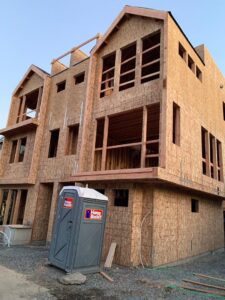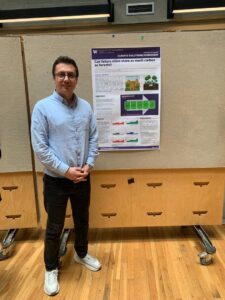I had the opportunity to have a six-month visit to the United States as a postdoctoral researcher in sustainable building construction field. My goal was to deepen my understanding of how timber can support climate goals — not only by lowering embodied emissions, but also through its potential to store carbon over a building’s life cycle.
In my research, I focus on life cycle assessment (LCA) and climate strategies in the built environment. For this international research visit, I headed to the West Coast of the U.S., a region known for its leadership in timber innovation and progressive approaches to building sustainability.
Research Goals
The main objective of the visit was to carry out a comparative analysis of several case buildings drawn from both Finnish and U.S. contexts to evaluate their environmental performance when different building materials are used. My focus was especially on timber buildings, and how they compare with conventional options such as concrete or steel.
Using LCA as a core method, I looked into the greenhouse gas emissions and carbon storage potential of building components. A key strength of the research was its comprehensive scope: it included both structural elements (such as beams and frames) and non-structural parts (like flooring, cladding, cabinetry, and paneling).
Why the West Coast?
California, Oregon, and Washington were especially attractive destinations for this project. These states have actively embraced mass timber construction, and they offer a wide range of case examples and ongoing pilot projects. Universities and researchers in the region also have a strong background in building LCA and carbon accounting, which made collaboration particularly valuable.
During my field visits, I had the chance to observe timber buildings under construction, such as the one pictured here. The structural components of this building were made from engineered wood, while many non-structural elements incorporated wood composites; both of which play a significant role in reducing embodied emissions and enhancing carbon storage. Seeing these materials applied at scale in real-world projects provided valuable insight into the practical challenges and innovations shaping low-carbon construction in the U.S.

Figure1. Timber building under construction – a case site visit
Activities and Early Outcomes
During the visit, I engaged in selecting U.S.-based case buildings and began collecting detailed data on material quantities from local sources. With the support of colleagues, I modeled alternative timber scenarios for those buildings and began the comparative LCA work.
One of the highlights during my stay was a symposium visit, and presenting a poster hosted by the College of Built Environments at the University of Washington. My poster, titled ”Can Future Cities Store as Much Carbon as Forests?”, introduced the Carbon Storage Factor (CS-Factor) — a clear and accessible metric that compares the carbon stored in buildings to the carbon lost from cleared forests. Using data from Finland’s Uusimaa region, the study showed that dense, timber-intensive urban developments can, in some cases, match or even exceed the carbon storage of forests. This symposium was not only a valuable academic exchange but also a great opportunity to showcase Finnish research and innovation in wooden building construction to a U.S. audience.

Figure 2. Presenting at the University of Washington symposium – May 2025
Reflections and What Comes Next
Although my time in the U.S. focused heavily on data collection, modeling, and collaboration, it was also an opportunity for professional and personal growth. Seeing timber construction in practice from design to construction added a new layer of depth to my research. I also appreciated experiencing the local culture and nature, from Pacific coastlines to vibrant cities where sustainability conversations are part of everyday life.
As the research continues, I plan to finalize the comparative analysis and co-author a publication based on the findings. I look forward to sharing those results in the next phase of this blog.